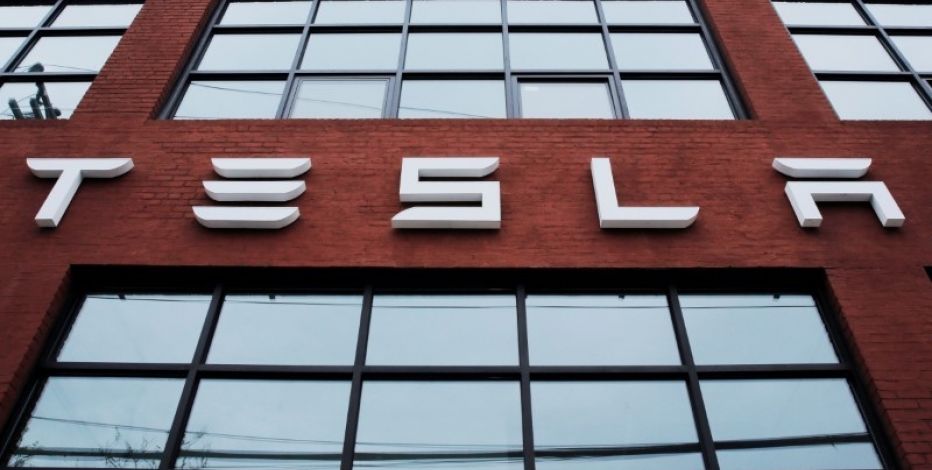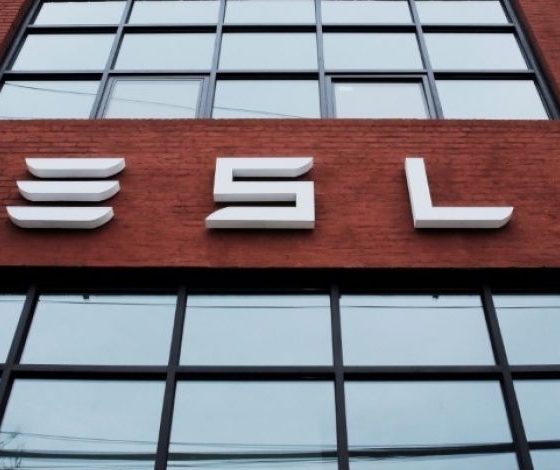

Investor's Corner
Tesla isn’t “losing” all of its executives — it just has a ton
Over the past week, you’ve probably heard reports of Tesla “losing” executives, and while the reports are correct, the narrative is wrong. As Musk pushes the Model 3 production ramp forward, he’s also aiming to bring the company to profitability in the second half of the year. Shedding unnecessary positions on the executive level certainly seems to be part of this plan.
But with reports of “executives” leaving Tesla surfacing what feels like, everyday, it seems like the company is spiraling out of control. This is fundamentally incorrect because the media is highlighting any “senior” departure as a major loss and isn’t providing context to Tesla’s broader management structure.
First, reports of “key” people leaving Tesla now range from Vice Presidents, Product Directors, Managers, and Directors. But how are we determining people to be key? Bloomberg’s Dana Hull reported that Bob Rudd and Arch Padmanabhan left the company. Rudd and Padmanabhan’s positions were Senior Director and Director respectively. Padmanabhan had been at Tesla for 5 years, while Rudd joined SolarCity in 2012 at VP of Project Development for Energy Storage & Microgrids.
It’s unclear why Rudd and Padmanabhan have left the company, but it could be part of Musk’s broader company reorganization. On Monday, Musk sent out a memo to employees telling them, “To ensure that Tesla is well prepared for the future, we have been undertaking a thorough reorganization of our company.”
In addition to the company’s overall structure, Musk is aiming to rid a significant number of contract workers at the company. During Tesla’s Q1 2018 earnings call, Musk referred to contractors as “barnacles” stating that, “…we’re going to scrub the barnacles on that front.”
“It’s pretty crazy. We’ve got barnacles on barnacles. So there’s going to be a lot of barnacle removal.”
I could list dozens of executive departures at Tesla that were not previously reported in the past year, all senior to both Rudd and Padmanabhan, but I think it’s more important to provide perspective on the number of executives Tesla actually employs. After an in-depth analysis of LinkedIn data, I have found 23 active Vice Presidents at Tesla. There were far too many Directors and Senior Directors to conduct an accurate analysis.
Since the beginning of 2017, Tesla has lost 9 VPs and 3 other major executives (CAO, CFO, and President). Of the executives that left, their average tenure was 3.9 years — nearly a third less than existing VPs. Comparably, the VPs that are currently employed by Tesla hold an average tenure of 4.8 years.
Of the executives that have left since the start of 2017, only 4 had stayed at the company longer than 3 years, suggesting that their departures could have been related to culture clash (Chris Lattner) or a stepping stone to a C-Suite position at another company (Jon McNeill, Diarmuid O’Connell).
While it isn’t clear how exactly Tesla will be “restructured,” you can be certain that nearly all departures will be “high profile” as investors watch closely.
Full list of executives included in this analysis:
Active (23):
- VP, Legal: Jonathan Chang
- VP, Manufacturing: Gilbert Passin
- VP, Materials Engineering: Charles Kuehmann
- VP, Sales: John Walker
- VP, Communications: Sarah O’Brien
- VP, Gigafactory Operations and EPC: Kevin Kassekert
- VP, Treasurer: Ron Klein
- VP, Automation, Equipment and MES Engineering: Pablo Gonzalez
- VP, Global Supply Chain: Sascha Zahnd
- VP, Worldwide Service and Customer Experience: Karim Bousta
- VP, Technology: Drew Baglino
- VP, Legal: Phil Rothenberg
- VP, Engineering: Steve MacManus
- VP of Engineering: Nick Kalayjian
- VP of Engineering: Dr. Michael Schwekutsch
- VP, Technology and Engineering: Nagesh Saldi
- VP, Asia Pacific: Robin Ren
- VP, US Energy Sales: Bryan Ellis
- VP, Global Recruiting: Cindy Nicola
- VP, Environment, Health, and Wellness: Laurie Shelby
- VP, Worldwide Finance and Operations: Justin McAnear
- VP: Ganesh Srivats
- VP, Production: Peter Hochholdinger
- VP, Gigafactory 1: Jens Peter Clausen
- VP, Trucks and Programs: Jerome Guillen
- VP, Powertrain Hardware Engineering: Jim Dunlay
- VP, Global Supply Management at Tesla Motors: Liam O’Connor
- VP of Vehicle Software, Services, and Diagnostics: David Lau
- VP of Energy Sales and Operations: Cal Lankton
- VP, Product Marketing: Elliott Summers
Executive Departures from 2017-current (8 VPs, 3 other Major Execs) :
- VP, Finance and Corporate Treasurer: Susan Repo
- VP, Investor Relations: Jeff Evanson
- VP, Talent Acquisition & Analytics: Raj Dev
- President, Global Sales, Marketing, Delivery, and Service: Jon McNeill
- VP, Autopilot Hardware Engineering: Jim Keller
- CFO, Jason Wheeler
- CAO, Eric Branderiz
- VP, Autopilot: Chris Lattner
- VP, HR: Arnnon Geshuri
- VP, HR: Mark Lipscomb
- VP, Autopilot Vision David Nister
Disclaimer: This column does not necessarily reflect the opinion of Teslarati and its owners. Christian Prenzler does not have a position in Tesla Inc. or any of its competitors and does not have plans to do so in the next 30 days.

Investor's Corner
Tesla stock closes at all-time high on heels of Robotaxi progress

Tesla stock (NASDAQ: TSLA) closed at an all-time high on Tuesday, jumping over 3 percent during the day and finishing at $489.88.
The price beats the previous record close, which was $479.86.
Shares have had a crazy year, dipping more than 40 percent from the start of the year. The stock then started to recover once again around late April, when its price started to climb back up from the low $200 level.
This week, Tesla started to climb toward its highest levels ever, as it was revealed on Sunday that the company was testing driverless Robotaxis in Austin. The spike in value pushed the company’s valuation to $1.63 trillion.
Tesla Robotaxi goes driverless as Musk confirms Safety Monitor removal testing
It is the seventh-most valuable company on the market currently, trailing Nvidia, Apple, Alphabet (Google), Microsoft, Amazon, and Meta.
Shares closed up $14.57 today, up over 3 percent.
The stock has gone through a lot this year, as previously mentioned. Shares tumbled in Q1 due to CEO Elon Musk’s involvement with the Department of Government Efficiency (DOGE), which pulled his attention away from his companies and left a major overhang on their valuations.
However, things started to rebound halfway through the year, and as the government started to phase out the $7,500 tax credit, demand spiked as consumers tried to take advantage of it.
Q3 deliveries were the highest in company history, and Tesla responded to the loss of the tax credit with the launch of the Model 3 and Model Y Standard.
Additionally, analysts have announced high expectations this week for the company on Wall Street as Robotaxi continues to be the focus. With autonomy within Tesla’s sights, things are moving in the direction of Robotaxi being a major catalyst for growth on the Street in the coming year.
Elon Musk
Tesla needs to come through on this one Robotaxi metric, analyst says
“We think the key focus from here will be how fast Tesla can scale driverless operations (including if Tesla’s approach to software/hardware allows it to scale significantly faster than competitors, as the company has argued), and on profitability.”

Tesla needs to come through on this one Robotaxi metric, Mark Delaney of Goldman Sachs says.
Tesla is in the process of rolling out its Robotaxi platform to areas outside of Austin and the California Bay Area. It has plans to launch in five additional cities, including Houston, Dallas, Miami, Las Vegas, and Phoenix.
However, the company’s expansion is not what the focus needs to be, according to Delaney. It’s the speed of deployment.
The analyst said:
“We think the key focus from here will be how fast Tesla can scale driverless operations (including if Tesla’s approach to software/hardware allows it to scale significantly faster than competitors, as the company has argued), and on profitability.”
Profitability will come as the Robotaxi fleet expands. Making that money will be dependent on when Tesla can initiate rides in more areas, giving more customers access to the program.
There are some additional things that the company needs to make happen ahead of the major Robotaxi expansion, one of those things is launching driverless rides in Austin, the first city in which it launched the program.
This week, Tesla started testing driverless Robotaxi rides in Austin, as two different Model Y units were spotted with no occupants, a huge step in the company’s plans for the ride-sharing platform.
Tesla Robotaxi goes driverless as Musk confirms Safety Monitor removal testing
CEO Elon Musk has been hoping to remove Safety Monitors from Robotaxis in Austin for several months, first mentioning the plan to have them out by the end of 2025 in September. He confirmed on Sunday that Tesla had officially removed vehicle occupants and started testing truly unsupervised rides.
Although Safety Monitors in Austin have been sitting in the passenger’s seat, they have still had the ability to override things in case of an emergency. After all, the ultimate goal was safety and avoiding any accidents or injuries.
Goldman Sachs reiterated its ‘Neutral’ rating and its $400 price target. Delaney said, “Tesla is making progress with its autonomous technology,” and recent developments make it evident that this is true.
Investor's Corner
Tesla gets bold Robotaxi prediction from Wall Street firm
Last week, Andrew Percoco took over Tesla analysis for Morgan Stanley from Adam Jonas, who covered the stock for years. Percoco seems to be less optimistic and bullish on Tesla shares, while still being fair and balanced in his analysis.

Tesla (NASDAQ: TSLA) received a bold Robotaxi prediction from Morgan Stanley, which anticipates a dramatic increase in the size of the company’s autonomous ride-hailing suite in the coming years.
Last week, Andrew Percoco took over Tesla analysis for Morgan Stanley from Adam Jonas, who covered the stock for years. Percoco seems to be less optimistic and bullish on Tesla shares, while still being fair and balanced in his analysis.
Percoco dug into the Robotaxi fleet and its expansion in the coming years in his latest note, released on Tuesday. The firm expects Tesla to increase the Robotaxi fleet size to 1,000 vehicles in 2026. However, that’s small-scale compared to what they expect from Tesla in a decade.
Tesla expands Robotaxi app access once again, this time on a global scale
By 2035, Morgan Stanley believes there will be one million Robotaxis on the road across multiple cities, a major jump and a considerable fleet size. We assume this means the fleet of vehicles Tesla will operate internally, and not including passenger-owned vehicles that could be added through software updates.
He also listed three specific catalysts that investors should pay attention to, as these will represent the company being on track to achieve its Robotaxi dreams:
- Opening Robotaxi to the public without a Safety Monitor. Timing is unclear, but it appears that Tesla is getting closer by the day.
- Improvement in safety metrics without the Safety Monitor. Tesla’s ability to improve its safety metrics as it scales miles driven without the Safety Monitor is imperative as it looks to scale in new states and cities in 2026.
- Cybercab start of production, targeted for April 2026. Tesla’s Cybercab is a purpose-built vehicle (no steering wheel or pedals, only two seats) that is expected to be produced through its state-of-the-art unboxed manufacturing process, offering further cost reductions and thus accelerating adoption over time.
Robotaxi stands to be one of Tesla’s most significant revenue contributors, especially as the company plans to continue expanding its ride-hailing service across the world in the coming years.
Its current deployment strategy is controlled and conservative to avoid any drastic and potentially program-ruining incidents.
So far, the program, which is active in Austin and the California Bay Area, has been widely successful.








